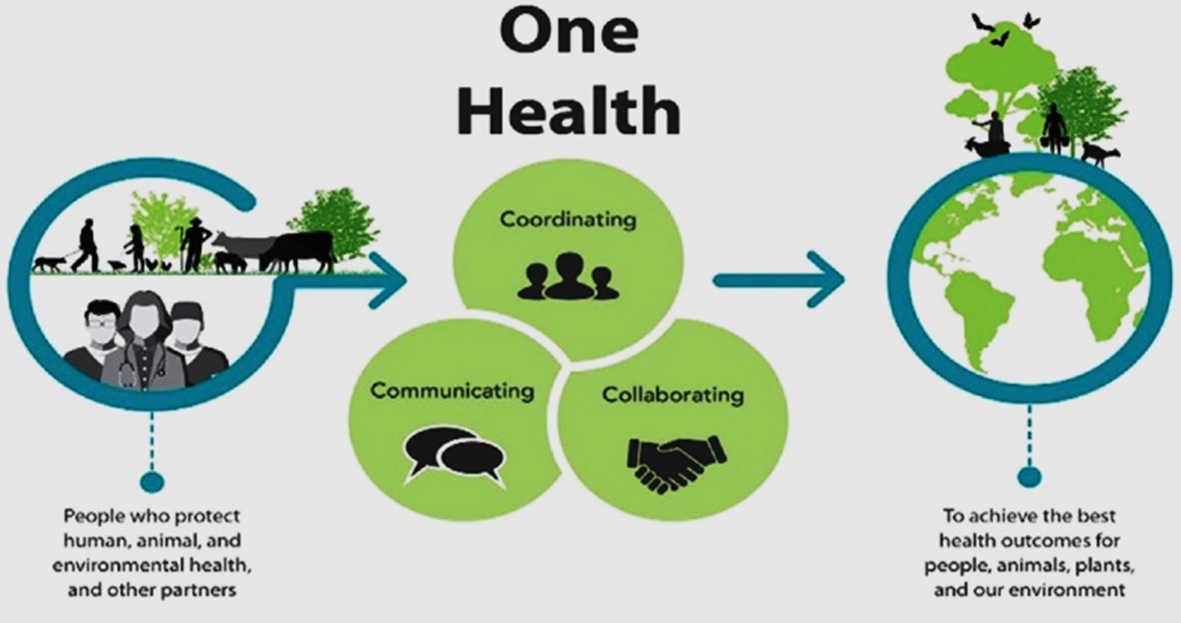Thursday, 27th May 2021
Iran-India in Farzad-B gas field
In News
Recently India lost the ONGC-discovered Farzad-B gas field in Iran.
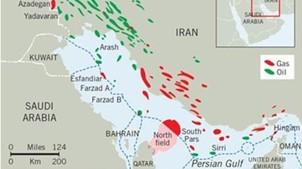
Background
- In 2008, an ONGC Videsh Ltd (OVL)-led consortium discovered Farzad B gas within the Farsi offshore gas block.
- The 3,500 square kilometer Farsi block sits in a water depth of 20-90 metres on the Iranian side of the Persian Gulf.
- The field holds 23 trillion cubic feet of in-place gas reserves, of which about 60% is recoverable. It also holds gas condensates of about 5,000 barrels per billion cubic feet of gas.
- Since 2016, negotiations were on to develop the Farzad-B gas field under an integrated contract covering upstream and downstream, including monetization/marketing of the processed gas. However, negotiations remained inconclusive.
Possible Reasons for present development
- The difference between Iran's demanded gas price and India's offer.
- Iran had earlier indicated that the S. sanctions were responsible for its decision to go domestic on the gas field as international partners stayed away because of the threat of sanctions.
- India also froze energy ties with Iran because of the threat re-imposed by the US in 2018.
Concerns for India
- Energy Security: Farzad- B’s recoverable reserves are about half of total reserves of India. Without it, India’s target to raise the usage of Natural Gas to 15% of total energy use would be now much more concentrated on imports from Qatar which currently meets more than half of India’s current gas imports.
- Influence of China: In 2021, China and Iran signed a 25-year strategic cooperation pact. India has lost 2 strategic projects in since last year- one being the Farzad-B while other is the planned construction of a rail line from Chabahar port to Zahedan, along the border with Afghanistan. This gives further space to China in Iran.
- Role in Afghanistan: The developing Iran-China-Pakistan axis may limit India’s cooperation with Afghanistan.
- Role in West Asian Region: The changing geopolitics of west Asia demands proactive role of India to secure its interests. India must balance its stand on Israel-USA-Saudi Arabia vis-à-vis Iran.
- Chabahar Port: India has got lease of two berths at the port for 10 years of which almost 3 years are already over. India must strive hard to maintain its presence there to counter the impacts of China led Gwadar port in neighbouring Pakistan.
https://www.newsclick.in/how-india-lost-way-persian-gulf
https://thediplomat.com/2021/04/what-the-china-iran-strategic-cooperation-pact-means-for-india/
https://www.presstv.com/Detail/2020/09/15/634151/Iran-Farzad-gas-field-deal-India-Us-sanctions
Draft notification for creation of a Lakshadweep Development Authority
In News
The Draft notification for creation of a Lakshadweep Development Authority has created widespread resentment among the inhabitants of the Lakshadweep group of islands.

About the Draft notification for creation of a Lakshadweep Development Authority
- Powers of the Administrator: The regulation empowers the administrator, to constitute Planning and Development Authorities under it to plan the development of any area identified as having “bad layout or obsolete development”. Only cantonment areas are exempted from this.
- Definition of Development: The draft regulation defines development as the carrying out of building, engineering, mining, quarrying or other operations in, on, over or under land, the cutting of a hill or any portion thereof or the making of any material change in any building or land or in the use of any building or land.
- Types of Land Use: These authorities are to prepare land use maps, carry out zonation for type of land use and indicate areas for proposed national highways, arterial roads, rings roads, major streets, railways, tramways, airports, theatres, museums, playgrounds etc.
- Land for Public purpose: The Regulation also gives the powers to the Government to choose any land for development activities that have been provided under its regulation. Once the land is picked, it could be used as per the government sees fit. This means the owner would have no control over the land whatsoever because the land would be provided for a public purpose.
What are the Concerns regarding the draft notification?
- Unsustainable development: The ecologically fragile islands are tiny and thickly populated. So, construction of highway or tramway in such densely populated tiny areas is neither ecologically sustainable nor socially viable.
- Fear of Relocation: The notification vests such powers with the authority that it can prepare comprehensive development plans for any area and relocate people regardless of their will. It provides for forcible eviction, puts the onus on the owner to develop his holding as per the plan prepared by the authority as also to heavily penalise them in the event of non-compliance.
- Real estate development concepts: Proposals to bring real estate development concepts such as ‘transferable development rights’ to the island have raised the concerns among people who fear they would be forced to migrate en masse. There is fear of usurping of small holdings of property owned by islanders by real estate owners.
- Mismatch between needs of the residents and the vision of the administration: A major concern of the island people is transport connectivity between the islands and the Indian mainland. But rather that addressing the need for more ships and boats and better management of the facilities, the notifications aims for trains and trams. This reflects a heavy-handed and top-down approach of development.
IT Rules 2021 come into effect
In News
The Information Technology (Intermediary Guidelines and Digital Media Ethics Code) Rules, 2021 came into effect from May 26, 2021.

About the News
- Notification: The Central governemnt on February 25 had notified the Information Technology (Guidelines for Intermediaries and Digital Media Ethics Code) Rules, 2021.The Rules have been notified under the Information Technology Act, 2000.
- Rules in Brief: The new IT Rules 2021 for digital media platforms includes the requirement to appoint a resident grievance officer who should be based out of India as part of a larger grievance redressal mechanism, active monitoring of content on the platform, responsiveness to grievances, expedited processes to take down certain content including revenge porn, monthly compliance reports for Indian users, self-regulation mechanisms and also an oversight mechanism created by the Ministry of Electronics and Information Technology.
- The motive behind of the Rules: Need for necessary guidelines to eliminate child pornography, rape and gangrape imageries, videos and sites in content hosting platforms and other applications, misuse of social media and spread of fake news and to strengthen the legal framework and make the social media platforms accountable under the law.
- Compliance period: The significant social media intermediaries were given three months for compliance. Social media giants like Facebook aim to comply with the provisions of India’s new IT rules of intermediaries but are in process of discussion of some issues related to the new guidelines with the government.
Several Concerns have been raised against the IT rules:
- Traceability clause: Facebook-owned messaging platform WhatsApp has filed case against the Indian government over the traceability clause in the new IT Rules 2021. WhatsApp is invoking the 2017 Justice K S Puttaswamy vs Union of India case to argue that the traceability provision is unconstitutional and against people’s fundamental right to privacy as underlined by the Supreme Court decision.
- Safe Harbour: The industry has also raised concerns over potential unavailability of ‘safe harbour’ protection given to intermediaries under Section 79 of the IT Act, under the new rules. It can lead to imposition of criminal liability upon the employees for non-compliance by intermediaries and needs to be dropped in the interest of ease of doing business.
- Extension of compliance period: Many industry bodies have been seeking an extension of six months to a year for compliance. As India is dealing with the second wave of COVID-19, intermediaries find it extremely onerous to organise the capabilities and resources required to configure their operations with the fresh obligations.
Sources: https://pib.gov.in/PressReleseDetailm.aspx?PRID=1700749
CIRCULAR ECONOMY IN ELECTRONICS AND ELECTRICAL SECTOR
In News
The Ministry of Electronics and Information Technology (MeitY) has formulated a policy paper titled "Circular Economy in Electronics and Electrical Sector".
What is Circular Economy (CE)?
- Circular economy is a concept describing an industrial economy, which produces no wastes and no emissions through its design, considering all the phases of the life cycle of products.
- CE is an industrial system, which is an alternative to highly extractive and resource-intensive linear economy principle of take-make-dispose.
- CE replaces the end-of-life concept and aims at retaining value of resources, products and materials at their highest by keeping them in use as long as possible, minimizing wastage at each life-cycle stage, and extracting the maximum value through reusing, repairing, recovering, remanufacturing and regenerating products and materials at the end of each service value.
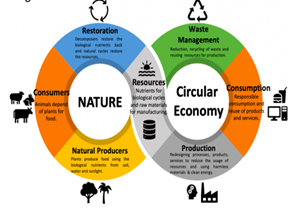
Circular Economy Opportunity
- Economic Opportunity:
- Critical Materials for Manufacturing: In India, lack of domestic reserves and supply of rare earth elements, makes CE even more important as CE approach provides an opportunity to enhance resource availability for domestic manufacturing.
- Jobs: To include CE measures at each stage of the product life cycle and value chain, CE skilled professionals and experts would be needed. It will also promote innovation and research infrastructure in the sector.
- Environmental Benefits:
- Longer lasting products will lead to reduced volume of waste generated, and enhanced resource recovery from e-waste. It will reduce extraction pressures especially for the rare earth elements that are predominantly found in bio-diversity rich areas.
- Responsible and circular resource use can also contribute towards reduction of GHG emissions and help meet the climate change commitments.
- Social Benefits
- CE measures have the potential to reduce conflict and displacement in mining areas, as well as improve health and welfare of local communities.
- The enhanced job and livelihood opportunities in EEE sector through CE measures will contribute to overall poverty reduction.
- Recovery of resources and domestic manufacturing can further enhance access of such products to greater number of people.
Status of CE in EEE in India
- Currently informal sector in India is the backbone of recycling and resource recovery. However, due to lack of economic capital and access to technology -
- mostly the methods employed are risky, unscientific, and hazardous to human health and environment.
- lack of capacity development for this sector leads to lower levels of resource efficiency in the recycling of waste and recovery of secondary raw materials.
- Extended Producer Responsibility (EPR) under the E-Waste Management Rules, 2016 rests on circularity principles by ensuring producers responsible for cradle-to-cradle management of the products.
Need for CE Approach in India
- Resource acquisition: India is the third largest consumers of raw materials produced globally and estimated to consume nearly 15 billion tonnes of material by 2030 with the current economic trends.
- E- Waste management: India is the third largest e-waste generating country (with 3.2 million tonnes in 2019), however, only 10% of the waste is collected for recycling.
- Global E-waste Monitor 2020 estimates that lack of e-waste collection and recycling resulted into the loss of nearly $47 billion in recoverable materials including gold, silver, copper, platinum, and other high value materials.
Recommendation to entail CE in EEE sector
The MeitY’s Policy paper on CE in EEE Sector focuses on lifecycle of electronics and recommends following action plan for implementation of CE principles.
|
Life-Cycle Stage |
Recommendation |
|
Raw Material Acquisition |
· Institutional arrangement to track availability and demand of critical materials for India. · Incentive to set-up infrastructure and for producers using critical materials from secondary resources. |
|
Design, Manufacturing, Product Assembly |
· Design future Production Linked Incentive Scheme (PLI) of Government to include CE approach. · Reorient MeitY’s skill development programme on Electronics System Development and Manufacturing (ESDM) in line with CE approach. |
|
Consumption Stage |
· Resource Efficiency/Circular Economy labelling · Eco-labelling on the products in the % use of recycled materials in the product to create the consumer awareness. · Promote Green public procurement by Government agencies |
|
End-of-Life (EOL) Stage Collection |
· Schemes linked to Green Skill Development Programme for informal sector to transition to formal economy · Formalisation of informal sector into collection. · Strengthen urban local bodies in waste collection |
|
Recycling/ Recovery Stage |
· Strengthening Recycling Systems by focusing strongly on depollution practices · Introduction of recovery targets covering both toxic and non-toxic fractions. |
|
Other Recommendations |
· National Circular Economy Council (NCEC), a multi ministry-level agency in charge of promoting circular economy in India is proposed. · Taskforce to enhance the competence of the value chain for overseeing the PRO, recyclers and digital exchange. · Periodic revision of the E-Waste (Management) Rules 2016. · Overhaul the penalty system under the Rule 2016 in favour of a graded financial penalty system that is structured to promote growth of the overall e-waste ecosystem. |
Question: Explain the concept of circular economy. Giving examples, discuss its utility in India.
Source-https://www.meity.gov.in/writereaddata/files/Circular_Economy_EEE-MeitY-May2021-ver7.pdf
This Day in History Pandit Jawaharlal Nehru
On May 27, 1964, Pandit Jawaharlal Nehru breathed his last at the age of 74 in New Delhi after a heart attack. Nehru was born on November 14, 1889, in Uttar Pradesh’s Prayagraj. Following an active role in the freedom struggle of the country, he became the first prime minister of India on August 15, 1947 and went on to win 11 nominations for the Nobel Peace Prize for upholding peace in the Indian subcontinent from 1950 to 1955. He played a major role in making India a sovereign, socialist, secular, and democratic republic and was also a very prolific writer in English who authored several books including The Discovery of India, Glimpses of World History and his autobiography Toward Freedom. Nehru established institutions of higher learning including IITs, AIIMS and IIMs, included free and compulsory primary education to all children in his five-year plan, established heavy industries, laid the steppingstone for the foundation of the National Defence Academy and the Atomic Energy Commission, and initiated the non-aligned movement. Serving till his death, Jawaharlal Nehru remains India's longest-serving Prime Minister.
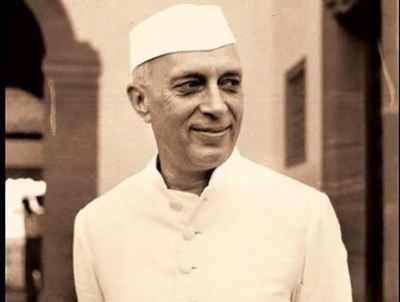
Image of the Day SuperMoon
The first lunar eclipse of 2021 took place in the early hours of 26 May. This was a superlunar event, as it will be a supermoon, a lunar eclipse and a red blood moon all at once. A supermoon occurs when a full or new moon coincides with the moon’s closest approach to the Earth. The relatively proximity of the moon makes it seem a little bit bigger and brighter than usual. A lunar eclipse happens when the Earth’s shadow covers all or part of the moon. This can only happen during a full moon. A full moon happens when the Moon and the Sun are on opposite sides of the Earth. This allows us to see the entire lit-up side, which looks like a round disc in the night sky. The Blood Moon occurs during a total lunar eclipse when the Earth aligns itself between the moon and the sun.
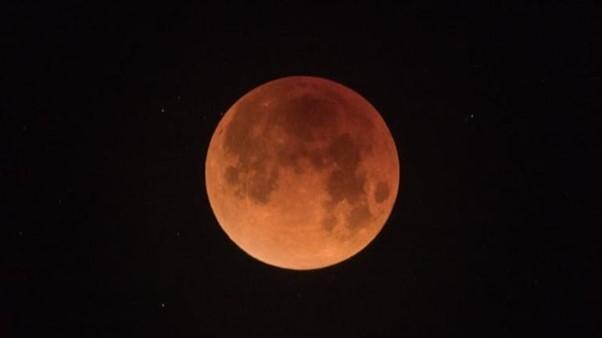
Vesak Global Celebrations
- Context: Virtual Vesak Global Celebrationson Buddha Purnima.
- Buddha Purnima (Vesak) is celebrated to mark the birth of Gautam Buddha, the founder of It is considered a 'triple-blessed day'as Tathagata Gautam Buddha's birth, enlightenment, and Maha-Parnirvana. In 1999, it became a UN designated day.
- Many devotees visit Mahabodhi Temple, a UNESCO World Heritage Site, located in Bodh Gaya, Bihar, on this occasion (Bodhi tree situated beside the temple is the location where Lord Buddha is said to have attained enlightenment).

Primary source: https://www.aninews.in/news/national/general-news/pm-modi-to-address-virtual-vesak-global-celebrations-on-buddha-purnima20210526094649/
Mekedatu Dam Project - Edukemy Current Affairs
- Context: NGT Committee to investigate violation of norms in reservoir construction across Cauvery River at Mekedatu in Karnataka.
- The Mekedatu Balancing Reservoir and Drinking Water Project involves construction of a balancing reservoir across Cauvery near Mekedatu in Karnataka. The proposal is aimed at providing drinking water facilities to Bengaluru and its surrounding areas and generate 400 MW of power as an additional benefit.
- If implemented, the project may have some impact on the Cauvery Wildlife Sanctuary and reserve forests due to submergence.
- Earlier Tamil Nadu had opposed the proposal arguing that it violates the final award of the Cauvery River Water Tribunal.
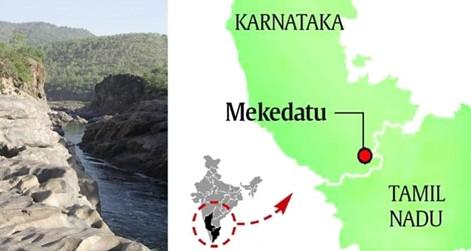
Yellow Fungus
- Context: cases of yellow fungus in India.
- Like black fungus and white fungus, yellow fungus or mucor septicus, too is a fungal infection, but it can be fatal and deadly as it begins internally unlike the others where symptoms are visible. This often leads to a delay in its diagnosis.
- It is afflicting people as treatments for Covid-19 have weakened the body’s natural immunity.
- Symptoms include loss of appetite, lethargy and weight loss. In latter stages of the infection, patients exhibit severe symptoms sunken eyes due to malnutrition, organ failure, slow healing of wounds, oozing of pus from the wounds and necrosis (death of cells and living tissues).
Tackling rural economic distress- TH
Essence: Lockdown will have severe implications for the livelihoods of those in the informal sector. The crisis for food and work is only going to intensify further. In this context, there is an urgent need to strengthen the public distribution system (PDS) and the Mahatma Gandhi National Rural Employment Guarantee Scheme (MGNREGS).
Why you should read this article?
- Briefly know the key findings of ‘Hunger Watch’ report published by the Right to Food campaign and the Centre for Equity Studies.
- Identify the critical problems faced by migrant workers due to lockdown imposed in the second wave.
- Learn about the steps required to strengthen PDS to tackle the problem of hunger and nutrition among migrants.
- Understand the problem of inadequate funds for MGNERGS and why it needs to be revised upwards.
Article Link: https://www.thehindu.com/todays-paper/tp-opinion/tackling-rural-economic-distress/article34653604.ece
Quad’s China strategy- Tribune
Essence- With the changing world order where China is trying to dominate (by posing security and economic challenges) a debate on whether India should discard its non-alignment ideals or not has arisen. Over the past five decades, China’s policies have been aimed at the strategic containment of India by adopting several measures including its recent warning to Bangladesh for damage of relationship if they provide any support to Quad. To counter Chinese aggression, focus of Quad primarily been on building close military ties which now expanded on military cooperation between its members with many of whom it has territorial disputes in South China sea and South Asia. Policy to counter China’s territorial ambition needs to be consulted between Quad members and potential partners, including the EU and ASEAN. Also, India must open the doors for more economic exchanges with Taiwan. Both Taiwan and South Korea can be key partners in enabling India to modernise and expand its electronics industries.
Why you should read this article?
- To get an overview of China’s aggressive policy and reason of debate over discard of non-alignment ideals.
- To understand the importance of Quad in countering Chinese aggression.
- To understand the how resolution of energy issue between US-Russia will impact India’s relation with China and Russia both.
Article link: https://www.tribuneindia.com/news/comment/quads-china-strategy-258837
Diverse Tribes in India: The Cholanaikkan Tribe of Kerala.
Brief:
- They were completely untouched by civilization until just 50 years ago.
- They are referred as Sons of the earth and Children of the forest.
- This tribe enjoyed the pleasures of solitude until very recently - they were first contacted only in the late 1960s.
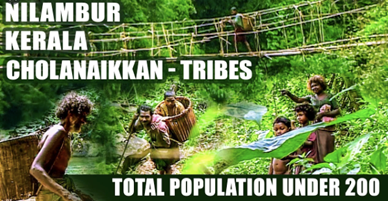
Deep insights into their way of life:
- The most fascinating aspect has been the way they managed to escape urban and conventional ways of life into the latter half of the 20th Century
- When first contacted, they didn’t even have any form of clothing and worship ‘ancestral spirits’. Trees were their only icons of devotion.
- They stayed close to the forest, living in rock shelters or crude huts beside brooks.
- This unique tribe gave the digital age a rare perspective into an ancient way of life. However, the present state does not appear to be quite encouraging.
Present state of the tribe:
- They are among the most primitive, but they are vanishing due to contact with the mainstream population
- The mainstream population brings itself the modernised culture, new disease which are threat to the tribal culture and the very existence of the tribe.
Things to ponder:
- How to integrate the tribal in the mainstream but also preserve their culture
Where can we use this case study:
- Development making inroads in the tribal belts and destroying the tribal way of life. Link the case study with the problems faced by the tribal population.
Share the article
Get Latest Updates on Offers, Event dates, and free Mentorship sessions.

Get in touch with our Expert Academic Counsellors 👋
FAQs
UPSC Daily Current Affairs focuses on learning current events on a daily basis. An aspirant needs to study regular and updated information about current events, news, and relevant topics that are important for UPSC aspirants. It covers national and international affairs, government policies, socio-economic issues, science and technology advancements, and more.
UPSC Daily Current Affairs provides aspirants with a concise and comprehensive overview of the latest happenings and developments across various fields. It helps aspirants stay updated with current affairs and provides them with valuable insights and analysis, which are essential for answering questions in the UPSC examinations. It enhances their knowledge, analytical skills, and ability to connect current affairs with the UPSC syllabus.
UPSC Daily Current Affairs covers a wide range of topics, including politics, economics, science and technology, environment, social issues, governance, international relations, and more. It offers news summaries, in-depth analyses, editorials, opinion pieces, and relevant study materials. It also provides practice questions and quizzes to help aspirants test their understanding of current affairs.
Edukemy's UPSC Daily Current Affairs can be accessed through:
- UPSC Daily Current Affairs can be accessed through Current Affairs tab at the top of the Main Page of Edukemy.
- Edukemy Mobile app: The Daily Current Affairs can also be access through Edukemy Mobile App.
- Social media: Follow Edukemy’s official social media accounts or pages that provide UPSC Daily Current Affairs updates, including Facebook, Twitter, or Telegram channels.

.gif)

